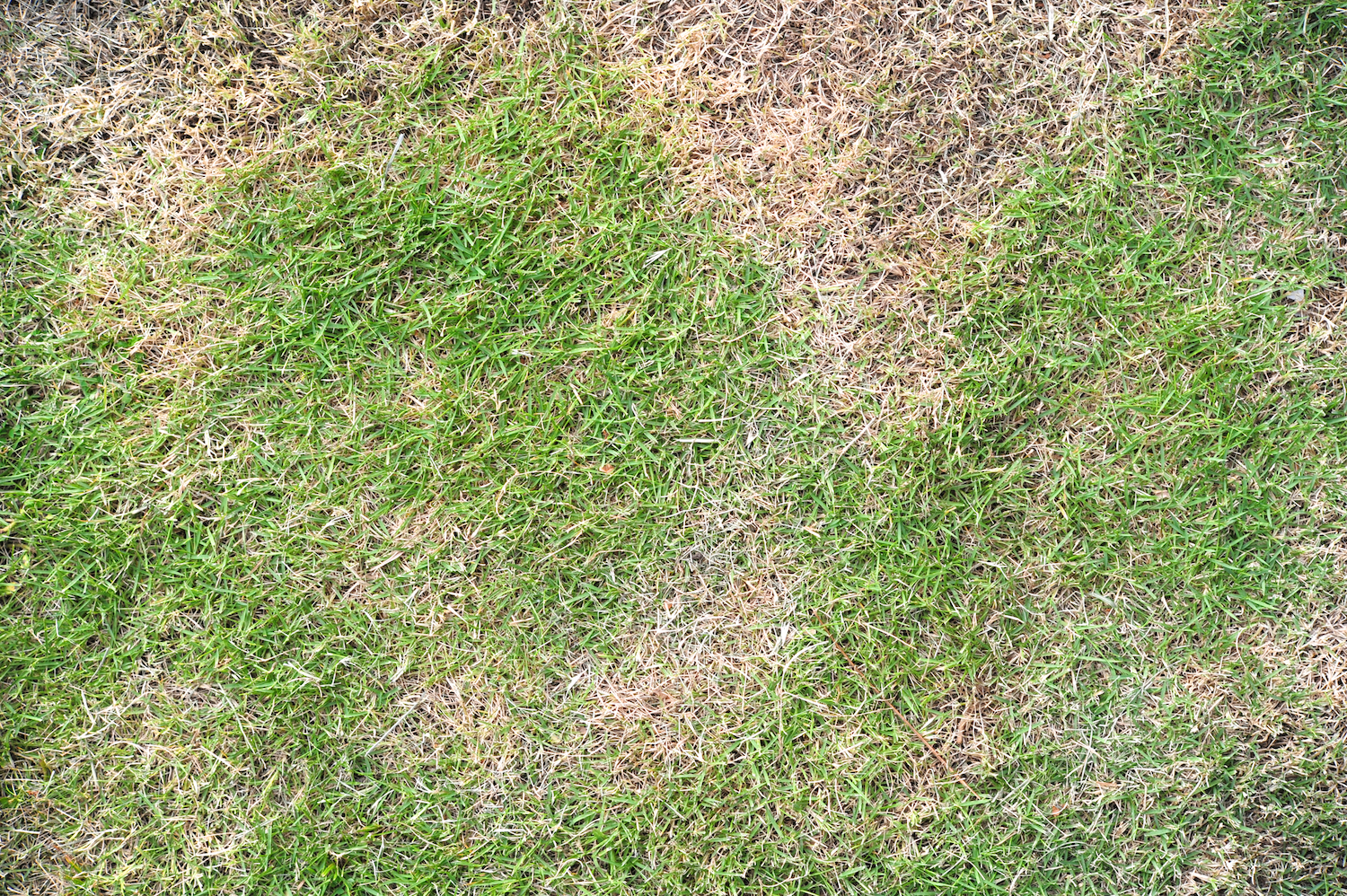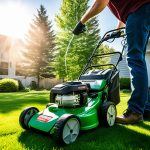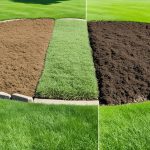When the mercury rises during summer months, many homeowners find their once lush lawns turning brown and lifeless. This common gardening challenge can be frustrating, especially when you’ve invested time and effort into maintaining your outdoor space. Understanding why grass turns brown in heat conditions helps you take effective action to restore your lawn’s health.
Brown grass doesn’t always mean dead grass. In many cases, grass enters a dormant state to conserve water and energy during stressful conditions. Different grass types have varying heat tolerances, and factors like soil quality, watering practices, and lawn maintenance all play roles in how well your grass withstands hot weather.
1) Lack of consistent watering leads to grass drying out
When temperatures rise, grass requires regular watering to stay green and healthy. Without consistent moisture, grass blades begin to dry out and turn brown as the plants enter dormancy to conserve energy and survive.
Water stress is one of the most common reasons for brown grass during hot weather. Lawns typically need about 1 to 1.5 inches of water per week, either from rainfall or irrigation, to maintain their green colour during summer heat.
The first sign of water stress is a bluish-grey tint to the lawn, followed by wilting. When you walk on water-stressed grass, your footprints remain visible because the blades lack the moisture needed to spring back up.
Shallow watering encourages weak root systems that cannot reach deeper moisture during hot spells. Instead, water deeply but less frequently to promote stronger, deeper roots that can better withstand periods of heat and drought.
Morning watering (between 4 and 10 am) is best as it reduces evaporation and gives grass time to dry before evening, which helps prevent disease. Evening watering can leave moisture on blades overnight, potentially leading to fungal problems.
2) Excessive sunlight causes heat stress on turf
When grass receives too much direct sunlight, especially during hot summer days, it can develop heat stress. This condition occurs when temperatures rise above 30°C, causing the grass to struggle with basic functions.
The sun’s rays can quickly dry out soil moisture, leaving grass blades without adequate water. When this happens, grass begins to conserve energy by shutting down growth processes and entering a dormant state.
You might notice your lawn developing a bluish-grey tint before turning brown. This colour change is an early warning sign that your grass is experiencing heat stress from excessive sun exposure.
Newly established lawns are particularly vulnerable to sun damage. Without deep root systems, they cannot access water reserves deeper in the soil during hot periods.
Grass varieties differ in their tolerance to sun exposure. Cool-season grasses like fescue and ryegrass tend to struggle more in direct sun than warm-season options such as Bermuda grass.
To protect your lawn, consider installing shade cloth during the hottest parts of the day. Proper irrigation in early morning hours also helps grass withstand intense sunlight by ensuring moisture is available when needed most.
3) Soil compaction restricts root growth and moisture absorption
Soil compaction occurs when soil particles are pressed together, reducing the space between them. This compression creates a dense layer that grass roots struggle to penetrate, limiting their ability to spread and grow deeper.
When soil becomes compacted, water has difficulty penetrating the surface. Instead of soaking in where roots can access it, water often runs off or pools on the surface, leaving grass roots dry despite watering efforts.
Compacted soil also restricts air circulation to grass roots. The lack of oxygen in compressed soil creates an unhealthy environment for roots and beneficial soil microorganisms that support grass health.
Heavy foot traffic, vehicles, construction activity, and even regular mowing can contribute to soil compaction over time. Clay soils are particularly prone to compaction problems compared to sandy soils.
To address soil compaction, aerating your lawn is essential. Core aeration removes small plugs of soil, creating channels for water, air, and nutrients to reach grass roots. This process should ideally be done yearly in either spring or autumn.
After aerating, top-dressing with compost can help maintain soil structure and prevent future compaction. Adding organic matter improves soil quality and creates a more favourable environment for grass roots to thrive.
4) High temperatures increase evaporation rates
When temperatures rise, water evaporates from the soil and grass much faster. This increased evaporation means that moisture essential for healthy grass growth disappears quickly from the root zone.
During hot weather, the soil can lose significant moisture within hours. Even if you’ve watered recently, intense heat can rapidly dry the top layers of soil where many grass roots exist.
Grass plants respond to this water loss by conserving resources. They direct less energy to leaf growth and more to survival, which often results in browning as the plant enters a dormant state.
The rate of water loss through evaporation can exceed the grass’s ability to absorb moisture. When temperatures exceed 30°C, evaporation rates can double compared to moderate weather conditions.
Wind compounds this problem by speeding up evaporation. Hot, dry breezes remove moisture from soil and grass blades even faster, creating additional stress for your lawn.
To combat high evaporation rates, water deeply but infrequently. This encourages roots to grow deeper where soil stays moist longer. Early morning watering (before 9 am) reduces evaporation loss significantly.
5) Fungal diseases thrive in hot, dry conditions
Contrary to popular belief, fungal diseases can flourish during hot, dry spells. Brown patch, dollar spot, and rust are common fungal issues that often appear when temperatures rise and grass becomes stressed.
These fungi attack weakened grass plants, turning your once lush lawn into a patchy, brown disappointment. The damage typically shows as circular brown areas that grow larger if left untreated.
Spores spread quickly in hot weather, especially when evening temperatures remain high. Poor air circulation between grass blades creates the perfect environment for fungi to grow and spread across your lawn.
Prevention starts with proper watering practices. Water deeply but infrequently in the early morning hours to reduce moisture on grass blades. This allows the lawn to dry completely before evening.
Apply fungicides at the first sign of disease rather than waiting for widespread damage. Choose products specifically formulated for the fungus affecting your lawn for best results.
Maintain proper mowing height and avoid excessive nitrogen fertiliser during hot periods. These simple steps help reduce stress on grass plants, making them less susceptible to fungal attacks.
6) Poor soil nutrition weakens grass resilience
Grass needs proper nutrients to withstand heat stress. When soil lacks essential elements like nitrogen, phosphorus, and potassium, grass plants develop shallow root systems and become more vulnerable to drought conditions.
Nutrient-deficient lawns show reduced ability to recover from heat damage. The grass blades thin out, making it easier for the sun to reach the soil surface and increase evaporation rates. This creates a cycle where the grass becomes increasingly water-stressed.
Soil testing helps identify specific nutrient deficiencies affecting your lawn. Most garden centres offer simple soil testing kits, or you can send samples to professional laboratories for more detailed analysis.
Apply an appropriate fertiliser based on test results. Spring and autumn applications generally provide the best results, as fertilising during intense summer heat can sometimes stress grass further.
Consider adding organic matter to improve soil structure and nutrient retention. Compost, well-rotted manure, and lawn clippings left after mowing all contribute valuable nutrients while improving the soil’s ability to hold moisture.
Regular soil maintenance develops deeper, stronger grass roots that can access moisture even during dry periods. This makes your lawn more resilient to browning when temperatures rise.
How Heat Affects Grass Physiology
Excessive heat directly impacts grass at a cellular level, causing biological changes that affect both visible appearance and long-term health. Heat stress disrupts normal plant functions and can lead to permanent damage if not addressed quickly.
Changes to Root Systems
Heat significantly alters grass root development during hot periods. When soil temperatures exceed 24°C, root growth slows dramatically as plants redirect energy to cooling above-ground parts. This survival mechanism comes at a cost.
Root mass can decrease by up to 50% during extended heat waves, limiting the grass’s ability to absorb water and nutrients. Shallow root systems develop as deeper roots die back, making the lawn more vulnerable to drought and disease.
Many common lawn grasses like perennial ryegrass show visible decline in root health after just 5-7 days of temperatures above 30°C. The roots become thinner and more brittle, with reduced branching and fewer root hairs.
Recovery requires consistent watering at appropriate times and may take weeks after temperatures return to normal ranges.
Water Loss and Stress
Heat accelerates water loss through transpiration—the plant version of sweating. During hot weather, grass can lose up to three times more water than during moderate temperatures.
This rapid water loss triggers several stress responses:
- Reduced photosynthesis as plants close leaf pores (stomata) to conserve moisture
- Protein denaturation within cells, disrupting normal cellular functions
- Increased respiration that depletes the plant’s energy reserves
The visible signs include wilting, folding of leaf blades, and eventually browning as cells die. Cool-season grasses like fescues and Kentucky bluegrass begin showing stress at around 27°C, while warm-season varieties like Bermuda can withstand temperatures up to 35°C.
Morning dew points provide a useful indicator of potential heat stress. When dew remains until mid-morning, it suggests the grass is maintaining better hydration levels despite the heat.
Long-Term Lawn Recovery Strategies
Restoring a heat-damaged lawn requires systematic approaches that address both immediate needs and underlying issues. These strategies will help your grass become more resilient to future heat stress.
Adapting Your Watering Routine
Effective watering is essential for long-term lawn health. Water deeply but infrequently to encourage roots to grow deeper into the soil.
The best time to water is early morning (between 4-10am) when temperatures are cooler and evaporation is minimal. This timing also reduces disease risk compared to evening watering.
Consider installing a smart irrigation system that adjusts watering based on weather conditions. These systems can reduce water usage by 20-50% while improving lawn health.
For most lawns, aim for about 2.5cm of water per week, including rainfall. Use a rain gauge or place shallow containers on your lawn to measure water application.
Gradually reduce watering frequency as temperatures cool to help your lawn transition between seasons.
Soil Improvement and Aeration
Poor soil structure often contributes to heat stress in lawns. Compacted soil prevents proper root growth and water absorption.
Aerate your lawn annually, preferably in autumn, to relieve compaction. Core aeration, which removes small plugs of soil, is more effective than spike aeration for heavily compacted areas.
Soil testing is valuable for identifying specific deficiencies. Most garden centres sell simple test kits, or you can send samples to professional labs for more detailed analysis.
Apply organic matter such as compost to improve soil structure. A thin layer (about 0.5cm) spread evenly can dramatically improve soil health without smothering the grass.
Consider topdressing with a mix of sand, compost and loam after aeration to fill holes and improve soil composition.





